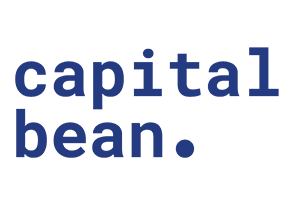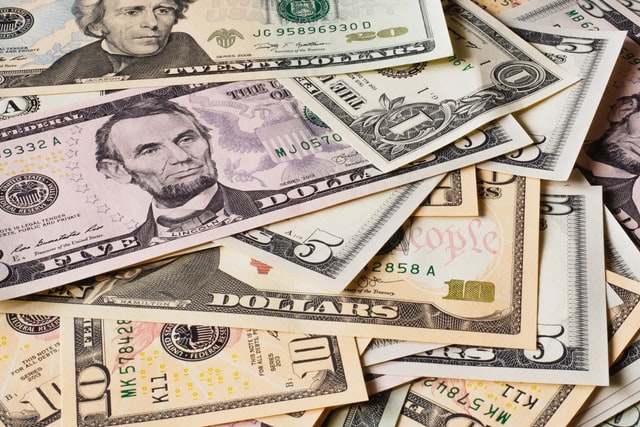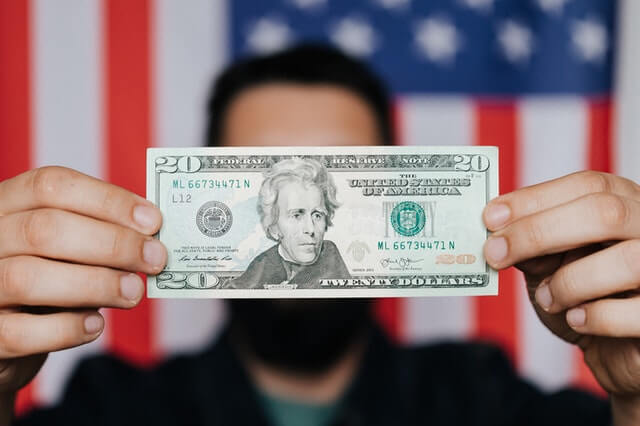There are a number of similarities between a secured and unsecured loan but there is one key difference between the two. For an unsecured loan you do not need any collateral to back the loan, for a secured loan you do need collateral.
Debt is something that we rarely like to think about and when we do think about it it doesn’t give us a good feeling. In reality not all debt is bad for you and it depends how you use it and how responsible you are with it. As part of being financially responsible it’s important to know the difference between unsecured and secured debt. Once you know the difference you can make better decisions about your future.
Key Points
- When taking out a loan, you will have the option of a secured or unsecured loan
- A secured loan is when you put something of value up as a collateral
- Collateral could be a small item of value such as jewelry to something as big as your home or property
What is secured debt?
Secured debt is defined as being backed up by some type of collateral. This collateral could be your house, a car, or any other property and assets that you own. If you were to default on the payment that you owe to the lender then they are able to reclaim the property you’ve put up as collateral.
Compared to unsecured debt, with secured debt you’re often paying less interest every month because the lender is confident that if you default on your loan they can reclaim the property you’ve put up as collateral. This means that the risk is lower to the bank and therefore you get a lower interest rate.
A consensual loan is the most common form of a secured debt. A consensual loan is where you put up property as collateral.
There are many non-consensual debts too. Examples of non-consensual loans include a tax lien that is placed against your property because you did not pay local, state, or federal tax or a money judgment that a creditor has put on you.
There are many examples of secure debt but some of the most common are home equity loans, auto loans, HELOCs (home equity lines of credit) and mortgages.
What’s an unsecured loan?
The key differentiator of an unsecured loan is that it does not require you to put up collateral. Even though you don’t have to put up collateral you still have to pay interest rates and sometimes pay fees when you set up the loan. Credit cards, student loans, installment loans and personal loans are all unsecured.
Financial institutions give out unsecured loans based on your history of repaying past debts and also your credit score. They have to base your creditworthiness on these two factors because there’s no collateral that you’re putting up. In many cases unsecured loans have higher interest rates than secured loans but this isn’t the case all the time.
In the US unsecured loans are growing in popularity year after year. At time of writing there were 20.2 million personal loan borrowers in the US alone. Unsecured loans are incredibly popular because you can use them for almost any purpose whether that’s to get married, renovate your living room, travel the world, or pay off your credit card.
Many people get unsecured personal loans to consolidate debt that they’ve accumulated from other lenders. Because personal loans tend to have a lower interest rate than credit cards this can sometimes be financially prudent. Especially because you’ll save money on interest.
Secured loans are lower risk for the lender and therefore usually have more favorable loan terms for the borrower
What should I know before I take out a secured or unsecured loan?
An important thing to do before you take a personal loan is to make sure you have a plan to pay it back. This could include making a budget or cutting back on other expenses in your life to make sure you hit the monthly payments.
A good rule of thumb is to only borrow money that you can afford to pay back each month. When looking at how much you can afford to pay back make sure to look at bank statements and credit cards going back a couple of months to make sure you account for all expenses. Even expenses that could be unexpected like a leaky roof or car repair.
Just because you’re approved for a loan doesn’t necessarily mean that you should take it. There could be other ways to get the money included borrowing from family and friends, visiting a credit union, or visiting a bank.
What is the difference between an unsecured loan and a secured loan?
Secured loans use property or assets as collateral whereas unsecured loans do not. Because you have collateral attached to a secured loan you typically pay lower interest rates, you can borrow more money, and repay this money back over a longer period of time. In the case of a home loan, which is a secured loan, APRs tend to be between three and four percent and you can repay this money for up to 30 years. This loan is backed by collateral which means that borrowers with good credit histories tend to pay less interest and get better terms.
On the other hand – credit cards and personal loans – which are examples of unsecured debt, are generally associated with higher interest rates and worse terms. This is especially true for borrowers who have a bad credit history which could make these terms even more restrictive for a borrower.
If you have a good credit history and own a property then secured debt is probably the route that you want to go down. It’s also a great way to rebound if you’re going through a tough financial patch or looking to rebuild your credit history. If you use a secured loan responsibly it can improve your eligibility for future loans.
With some secured credit cards you even get additional benefits that could include monitoring of your credit card and free identity theft protection. If your credit score is not over 800 and you’re just starting to build your credit many banks will offer you a secured credit card but it will have higher rates than those with good credit history.
These cards will be deposit based where you pay a lump sum to the bank that they put on a credit card for you then to spend. You’ll then use the card as normal and pay back month by month including the interest. If for whatever reason you can’t pay your balance one month then the bank will take the deposit that you’ve put in and help to pay off the balance.
Should I pay an unsecured or secured loan off first?
Regardless of whether you have unsecured or secured debt financial experts agree that the best place to start is with the product that has the higher interest rate. This technique of paying off higher interest rates first is called the avalanche or snowball method and means that every month you pay down higher interest rates it gives you more room in your budget to pay off other debts. If you follow this method for long enough you can find yourself debt-free.
In some cases bankruptcy can be a good option to clear your unsecured debt. This erases your legal responsibility to pay off this debt but be careful before you do this as it can severely impact your credit rating. You’re also less likely to receive unsecured or secured loans in the future.
When following the avalanche method it’s important to pay off secured debts as a top priority. The longer you have secured debts outstanding the higher likelihood that the lender will reclaim the collateral you put up against the loan.
What type of loan is right for me?
As with any financial product you should take your time and do your research before you apply for a loan. Make sure to be clear about what your priorities are including the amount you want to borrow, the interest rates you can pay, and how much you can afford to pay back each month. You could even look for pre-qualification from a couple of loans to get yourself started and see where you’re eligible.
Comparing different loan products will help you see where you’re eligible and see what you can afford. Rates and terms and conditions can vary significantly from product to product so it’s worth having everything in front of you before you make a decision.
If you have money and savings or other assets then the lender might take this as collateral and give you better interest rates and payment terms.
If you’re not willing on posting your assets as collateral then you might be better off taking an unsecured loan.
How do I qualify for a personal loan?
Unfortunately, there’s no step-by-step process that works for everyone. Every lender has slightly different terms and conditions which is why it’s so important to read them closely before applying. Even though we can’t tell you exactly what a lender will require there are some checks that most lenders tend to make.
Most lenders will check what your credit score is and also your credit history, they’ll look at your monthly month income and also look at how much debt (secured or unsecured) you have outstanding. Lenders tend to scrutinize unsecured loans in more detail because there’s no collateral that they could see if you can’t make repayments.
If you are applying for a secured loan the lender will want to see details about your assets, to make sure that you do own them outright and that they’re as valuable as you say they are.
How can I raise my chances of being approved for a secured or unsecured loan?
Credit is one of the biggest factors in whether you’ll be approved for a loan or not. It’s also a big factor in determining how much interest you’ll pay on the loan. Before you apply it’s prudent to check your credit history and score.
You can access your TransUnion or Equifax credit reports through the credit bureaus but also by signing up for a free account. The Gov also offer free credit reports here.
If you discover that your credit isn’t very good then there are strategies you can help to improve your credit rating. You can do the following:
Always start by checking your credit score in history.
It’s important to check your credit report as well as your history to see what’s on there. It’s also worth reading through your credit history to see if there’s anything on there that looks suspicious or that you don’t recognize. If you don’t recognize anything on your credit history you can raise this with your credit bureau.
Improve the health of your credit.
There are ways that you can improve your credit score month by month. This involves diligence and making sure that you make all your payments on time each month. If you can fully pay off your debt owed each month then even better. Another thing to watch out for is keeping your credit utilization rate under 30%.
Apply for a loan with a cosigner who has good credit.
If you’re applying for an unsecured loan and you don’t think your credit history is good enough then you could apply with someone who does have a good credit history. This will increase your chances of being approved for a loan at a better rate.
Avoid high-risk debt.
High-risk debt also tends to be the most expensive because the lender is not sure whether you’ll be able to repay on time. It tends to have higher interest rates and short-terms and can cause you real difficulties in the future if you’re unable to repay on time. If you have a family member or friend willing to lend you the money for a short period of time this could be a better option.
The bottom line
Your credit history is one of the biggest factors that determine whether it’ll be accepted for a loan. This is the case whether it’s a secured or unsecured debt that you’re taking out. An unsecured loan might not work for you if you’re just beginning to build your credit history or you have a less than stellar credit score. This is because lenders look at the credit score when making unsecured loans.
After you do take out a loan it’s important to prioritize paying back the unsecured or secured loan that has the higher interest rate. It’s also worth looking at paying off your secured loans first as these lenders can seize your assets if you don’t pay them back. If you can reduce your credit utilization rate this gives you the opportunity to increase your FICO score month by month. Finally, remember to know the difference between unsecured and secured debt, know how much you can borrow and what terms you’re willing to take before applying for any product.



